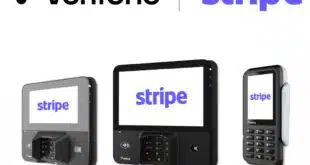The month of June gave Google Pay an extended moment. Early in the month, the tech press started circulating rumors that Google planned to add merchant buttons inside the app. This feature would allow both digital and brick-and-mortar businesses to accept customer payments within Google Pay.
But users in India shrugged at this news. Their country-specific version of Google Pay already allows similar functions in the app itself, including hailing rides and ordering food. A 2016 cash crunch in India caused consumer demand for e-payments to soar, even though the cash crunch itself didn’t last long.

Nicolas Crouzet, an associate professor of finance at Northwestern University’s Kellogg School of Management, told CNBC that the shock of this macroeconomic event led to long-term changes in consumer behavior. As a result, Google released cashless payment features in India before piloting those features in the States.
It’s no secret that the United States has a cash-centric culture. Compared to its global peers (especially across Europe and Asia), Americans have remained much more likely to use cash. As of last autumn, 70% of Americans used cash for at least some payments. But—as in India—a sudden, seismic, macroeconomic event shifted U.S. consumer spending toward cashless: the global arrival of Covid-19.
As the pandemic spread, North American states and provinces forced nonessential businesses to close for weeks to months at a time. This forced most business leaders to sell their products and services digitally, or not at all. In tandem, cash withdrawal rates were notably erratic, and some essential businesses discouraged cash payments.
These changes made us wonder if consumer sentiment toward cashless payments had changed during stay-at-home orders. Were consumers using cashless payments more often than before Covid-19, or at least open to doing so? If so, were small businesses prepared to meet that demand?
To answer these questions, Capterra ran two parallel surveys in late May 2020. One asked North American consumers about their use of, and openness to using, cashless payments, both before and during the pandemic. The second survey asked leaders of North American businesses with fewer than 500 employees about their cashless payment offerings, or lack thereof.
Here’s what we found:
Small businesses were more likely to offer cashless payments pre-pandemic than consumers were to use them. 83% of surveyed small-business leaders offered cashless payment options pre-pandemic, while a combined 72% of surveyed consumers used cashless payments often (46%) or sometimes (26%) pre-pandemic.
Consumers who feel strongly in favor of or against using cashless payments have not changed their behavior during the pandemic. However, the amount of respondents who haven’t used cashless payments in the past but are open to it rose by six percentage points.
Most surveyed consumers want cashless payments as an option; 72% said they expect businesses they shop at to offer such payments as a choice.
PayPal, Google Pay, and Apple Pay are the most popular cashless payment methods offered by the businesses we surveyed.
To date, Covid-19 has been like three years of digital commerce growth being pulled forward into three months. Even as businesses start to reopen, consumers are increasingly buying products online before picking them up in person. If they do choose to shop and pay in-store, they’re more likely to use a contactless method than they were pre-COVID: Use of contactless payments in the U.S. has jumped 150% since March 2019.
The small businesses that Capterra surveyed are well prepared to meet current consumer demand for cashless payments. Their next opportunity? Adopting point of sale software with near field communication to allow shoppers to use contactless cards.
With a vaccine nowhere in sight, and COVID-19 continuing to spread, feature enhancements to popular cashless payment apps aren’t enough. To thrive in tomorrow’s socially distant world, small businesses must budget for contactless payment technology today.
Lauren Maffeo is principal analyst at Capterra Inc., Arlington, Va.





